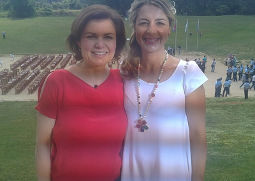The layout of Delphi is a unique artistic achievement. Mount Parnassus is a masterpiece where a series of monuments were built whose modular elements - terraces, temples, treasuries, etc. - combine to form a strong expression of the physical and moral values of a site which may be described as magical. Situated in a magnificent natural setting which is still intact, it is an outstanding example of a great Pan-Hellenic sanctuary.
During the Mycenaean period, the female deity of Earth was worshipped in the small settlement of Delphi. The development of the sanctuary and oracle were to begin in the 8th century BC with the establishment of the cult of Apollo. Under the protection and administration of the Amphictyony, the sanctuary continued to be autonomous after the First Sacred War and, as a result, increased its Pan-Hellenic religious and political influence. The Pythian Games were reorganized, the sanctuary was enlarged, and it was enriched with fine buildings, statues, and other offerings. In the 3rd century BC it came under the domination of the Aetolians and later, in 191 BC, was conquered by the Romans. During the Roman period the site was plundered on occasions, but it was also favoured by some of the Emperors. With the spread of Christianity, the sanctuary lost its religious meaning and was closed down by Theodosius the Great.
Some of the most important monuments of the site:
- Temple of Apollo: dated to the 4th century BC, the temple was erected precisely on the remains of an earlier temple of the 6th century BC. Inside was the adyton, the centre of the Delphic oracle and seat of Pythia.
- Treasury of the Athenians: A small building in Doric order, with two columns in antis and rich relief decoration, built by the Athenians at the end of the 6th century BC to house their offerings to Apollo.
- Altar of the Chains: The large altar of the sanctuary, in front of the temple of Apollo, erected by the people of Chios in the 5th century BC, according to an inscription. The monument was made from black marble, apart from the base and cornice in white marble, resulting in an impressive colour contrast.
- Stoa of the Athenians: Built in the Ionic order, has seven fluted columns, each made from a single stone. According to an inscription cut on the stylobate, it was erected by the Athenians after 478 BC, to house the trophies taken in their naval victories over the Persians.
- Theatre: Originally built in the 4th century BC, but the visible ruins date from the Roman imperial period. The cavea had 35 rows of stone benches; the foundations of the skene are preserved on the paved orchestra. The theatre was used mostly for the theatrical performances during the great festivals.
- Stadium: Constructed in the 5th century BC and remodelled in the 2nd century AD at the expense of Herodes Atticus; at this time the stone seats and the arched monumental entrance were added. It was in this Stadium that the Pan-Hellenic Pythian Games took place.
- Castalia Spring: The preserved remains of two monumental fountains that received the water from the spring in the ravine of the Phaedriades date to the archaic period and the Roman era. The later one is cut in the rock and has niches cut high in the cliff, which probably held the offerings to the Nymph Castalia.
- Tholos: A circular building in Doric order, built around 380 BC: its function is unknown but it must have been an important one, judging from the fine workmanship, and the high-standard relief decoration.
- Polygonal Wall: Built after the destruction of the old temple of Apollo in 548 BC, to support the terrace on which the new temple was to be erected. The masonry is polygonal and the curved joints of the stones fit perfectly in place. Many inscriptions, mostly manumissions, are carved on the stones of the wall.







Leave your comments
Post your review